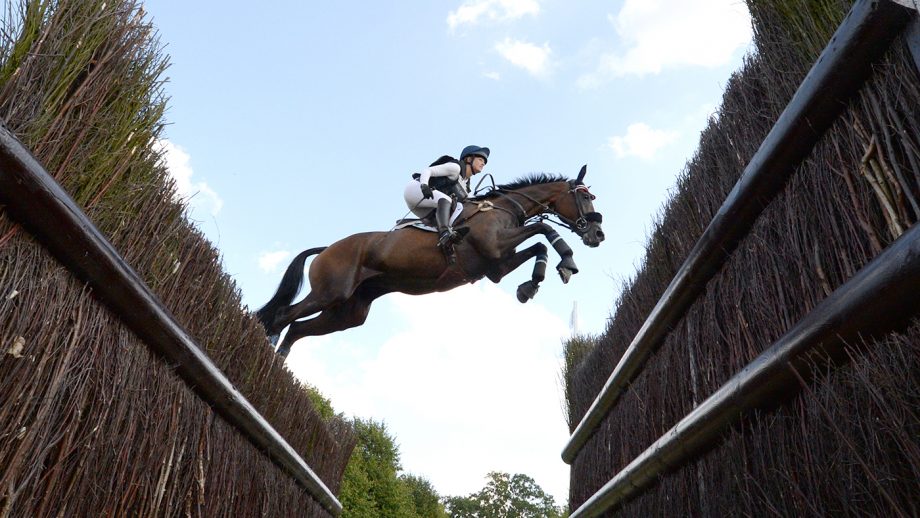Mats Björnetun on his trajectory from hot rods to cross-country safety devices
Under the MIMsafe brand, my company is the industry leader within the field of crash-tested dog cages, gates and universal cargo nets. We also produce MIMclips, the frangible devices which allow cross-country fences to “collapse” safely to help prevent falls. These became mandatory on 1 January 2021 on all fences to which they can be fitted at all FEI events.
Originally I was a farmer. I wasn’t interested in studying at school, but I was interested in motorcycles and hot rods, and was involved in drag-racing. Engineering and building things fascinated me.
In 1986, I started MIM Construction AB in my barn in Frändefors in Sweden, with a partner. Our aim was to solve automotive functional design problems for neighbours – and our goal was just to survive.
Four years later we were invited to Germany to visit Volkswagen, who have been clients ever since, alongside the likes of Audi and Porsche. That was so far ahead of the goals I had set that, since then, I have only had fun. If there are two different projects in view, I have always chosen the one that looks more fun.
My wife has had horses since she was young, and was interested in eventing. I had a farm, so in the mid-1990s, I said, “I can try to build a small cross-country course here.” We had some novice competitions here in 1994 and 1995, and after that I became the organiser of an event at a larger estate nearby, Baldersnäs, and from 1998 to 2002 we ran World Cup events there. I didn’t know much about horses, but I liked the world of eventing and its people.
I “retired” from organising in 2005, but somehow I ended up as event director of Malmö in 2008. That’s where I met Andy Griffiths, who was the technical delegate, and that was the beginning of MIMclips.
I saw from the beginning that we were not doing enough about safety in eventing. Because of the amount of crash-testing my company had done, I understood how to handle and absorb energy and about speed and direction; I knew we had to do more.
Through Andy, we were invited to a meeting in 2010 with lots of high-profile people from eventing, such as Mark Phillips, Mike Etherington-Smith, Hugh Thomas and David O’Connor.
Beforehand, MIMsafe had created its own crash machine, and I employed a crash expert from Chalmers University of Technology in Sweden. So when it came to that first meeting, we had so much knowledge that we scared everyone! That wasn’t our intention – we just wanted to show that we had a starting point.
Fully implementing something new always takes 10 years. So where we are now – that approved frangible devices must be fitted to all fences that can be constructed with them at all FEI events – is where I wanted to be in 2010. MIMsafe makes a financial loss on the MIMclip, but that is unimportant to me. I want to help a sport that I love.
The key element of the MIMclip is the hinge. When a horse hits the rail or the gate, or whatever, the energy created by the horse goes into the fence and accelerates it out of the horse’s way.
The laws of gravity mean that a free-falling object accelerates as it falls; if you drop something on your feet it hurts, but the first centimetre of the drop doesn’t hurt because it falls very slowly. The hinge on a MIMclip allows the rail to which it is fixed to fall down in a controlled arc, and stops the horse’s fall trajectory.
Eventing people are used to seeing the red MIMclip attached to fences such as oxers and gates, but we now have a yellow MIMclip, which is used for fences designed to be jumped at an angle, such as corners, and for tables.
It is triggered at 70% of the force that it takes for the red clip, and that comes with its problems. Spectators love to climb on fences while walking the course before or after the competition. How do organisers then ensure the frangible devices have not been inadvertently weakened? To solve this, we’re producing a silver clip to replace the MIMclip temporarily when the course is not being used.
We can never make cross-country 100% safe. It’s an exciting sport that involves solid fences being jumped at speed; competitors have a choice – to ride or not to ride, and they must take responsibility for themselves.
You can also read this feature in the 13 May issue of Horse & Hound magazine.
You might also be interested in…

Hopes are high for new British five-star to replace Burghley Horse Trials
“People might be asked to put their hands in their pockets; the message is: sit tight, and if it comes

Why Burghley cancelled, plus another Nations Cup leg lost *H&H Plus*

Olympic eventer Julia Krajewski: ‘I thought about giving up, but being around horses is just what I love to do’ *H&H Plus*

Regal Realm: from Australian stock horse to Badminton winner and world champion

